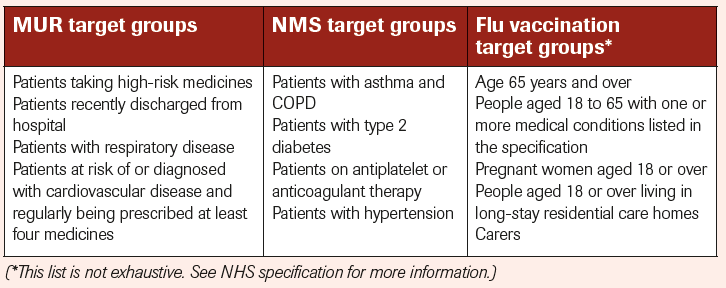Spend some time thinking about what different groups of people visiting your pharmacy might need and how you can support them
Patients as customers are the lifeblood of your pharmacy and, to increase patient loyalty and acquire new customers, your audience should be targeted with the right messages and in the right way. Many pharmacies make the mistake of marketing too broadly or not considering local needs and gaps €“ but you can't be everything to everyone. Furthermore, the increase in online shopping means that pharmacies in the community must work harder to retain customers by adding value in every contact and enhancing the customer experience.
A wide range of people use community pharmacy and, according to the Department of Health, 84 per cent of adults visit a pharmacy at least once a year; three-quarters of people will have visited one in the past six months.
Women, those aged over 35 and those with a long-term health condition or disability are frequent users. Adults use pharmacy more than any other healthcare sector and this provides an opportunity to offer an outstanding customer experience, meet needs beyond the core service and use word of mouth to promote what you do and create growth.
Accessibility is one of the attractions of the community pharmacy, but it doesn't mean you should market your services solely on that basis. Effectively growing your business requires you to think strategically about your purpose, what you want to be known for, the local healthcare needs, where you want to specialise and which patients you can serve best.
You will also want to consider which customers will generate more revenue and profit. Consider, for example, a care home that requires monitored-dose systems. This work generates volume, but is highly labour-intensive and so each item may not be as beneficial or profitable as, for example, walk-in patients with long-term conditions or substance misuse patients.
To date, you may have focused exclusively on the prescription product and the patient journey, but the recent cuts in NHS funding mean that you may be looking for ways to reduce your reliance on this revenue stream and diversify. Could you target patients based on their self care or health and wellbeing needs, thus increasing OTC and service revenue?
It can be beneficial to focus your efforts on specific patient groups to optimise their experience in your pharmacy, retain customers by increasing loyalty and recruiting new patients into services you specialise in.
Targeting specific groups
Targeting specific groups effectively requires a strategic marketing plan that reaches the different categories of patients. Your patients are individuals, and each one is at a different stage in his or her healthcare buying cycle.

Some may be looking for preventive healthcare, while others need help to manage long-term conditions. Another group might want convenience and be unlikely to go to a doctor until very ill, requiring accessible and effective support with their self care. Targeting each group successfully means communicating with each group independently, using language they can relate to, channels (the method of communication) they can access and services they identify with.
It's also worth considering where the money follows the patient. Look at the way the community pharmacy contract is constructed and where advanced services (medicines use reviews, new medicine service and flu vaccination) cover target patients (see table).
